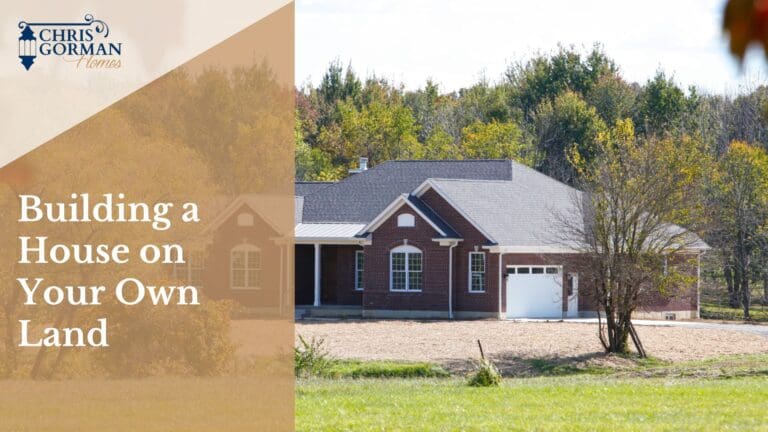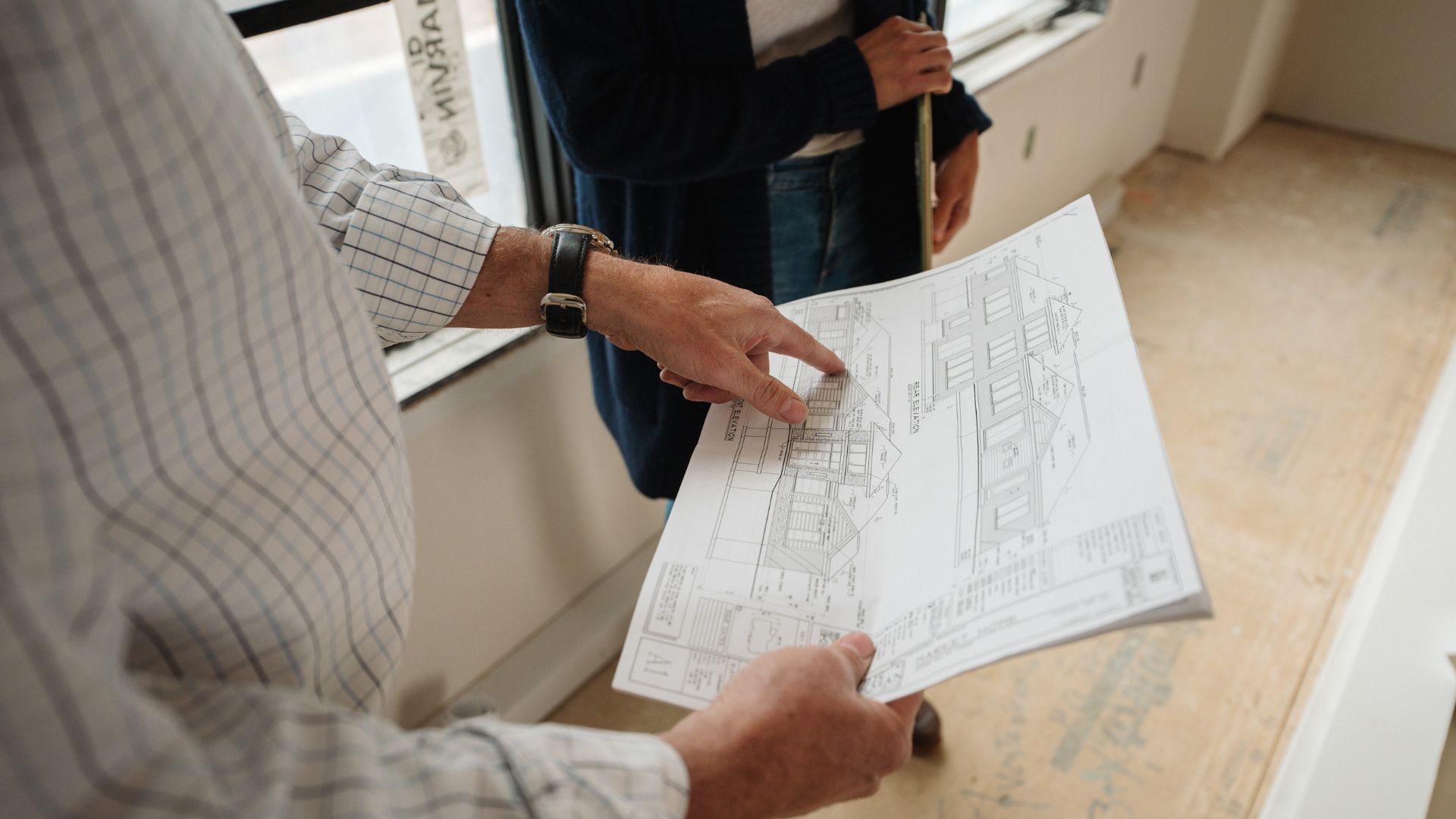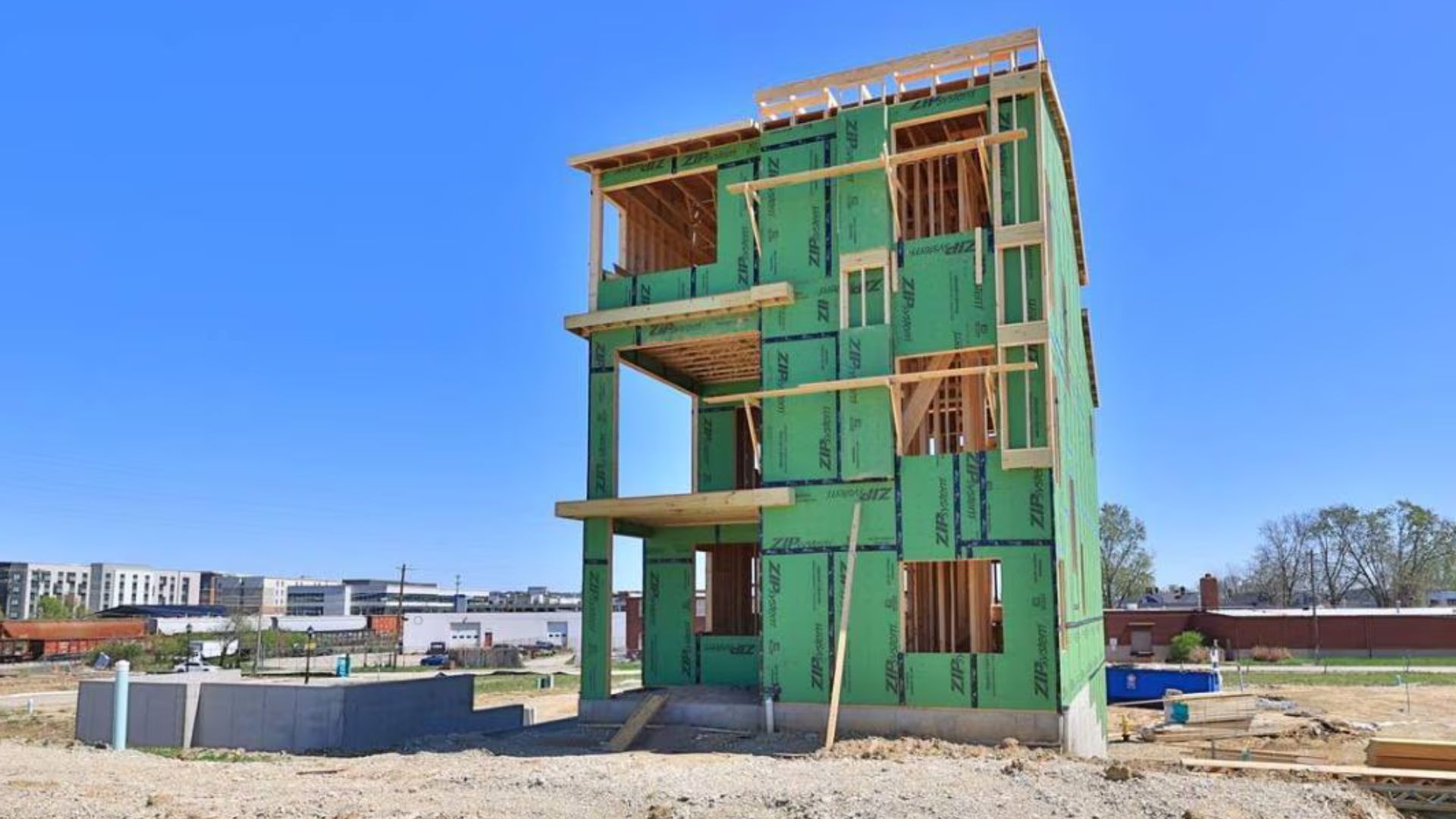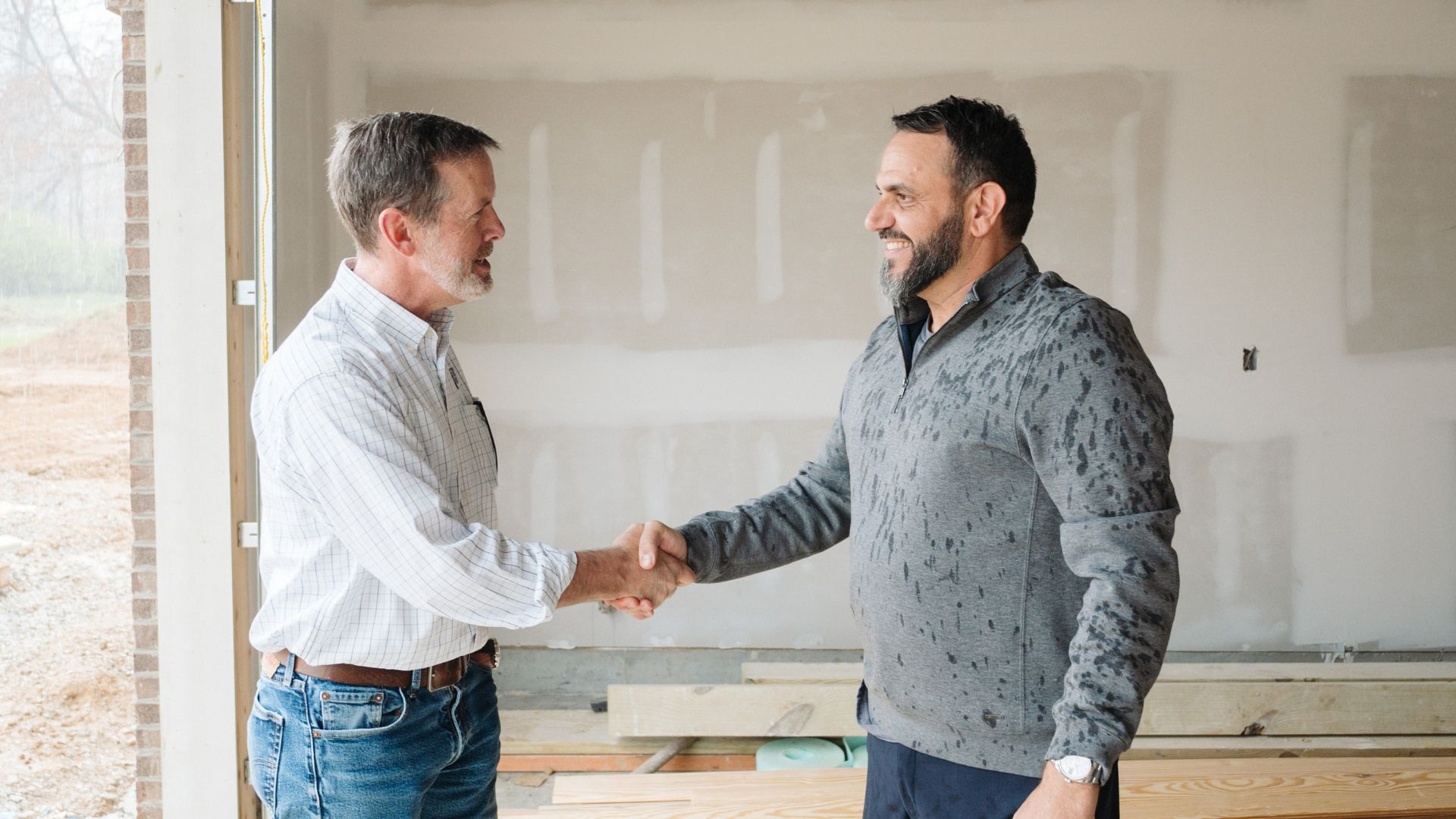I Want to Build a House on My Land: Where to Start

Building a home on your land can be one of life’s most satisfying adventures, but it also requires thoughtful deliberation and decisions. If you’re planning to build a house on your own land but aren’t fully prepared, the process of creating your dream home, which you may live in for decades, can quickly become more exhausting than exciting, not to mention over budget and behind schedule.
If you’re wondering, “How do I build a house on my land?”, look no further. This guide walks you through the many phases of this exciting endeavor so you can better plan and ensure success with expert guidance.
Get a Lay of the Land
If you already own property, the first thing you need to do before you can build a house is to check the zoning laws that apply to your land. Different zones have different rules that affect what you can build, and it’s important to know right away if there are any zoning laws that might prevent you from building a home. If there are, don’t fret! It is possible to apply for a zone change or for a special review. Find your zoning information on your municipality’s website or by calling or visiting your local city planning office.
Next, complete a soil test and land survey. These evaluations will inform you of potential challenges to building on your land, including topographical concerns like hills that will need grading or trees that will need to be removed, as well as the exact boundaries of your property. These tests will also tell you about your soil composition and drainage capabilities; your utility access to water, electricity and sewage; and any environmental factors that need to be considered.
If you select a builder early on, many, like Chris Gorman Homes, can walk you through zoning information and can conduct site evaluations themselves.
Budgeting and Financing
After you have a firm grasp of your local zoning laws and your land itself, it’s time to thoughtfully consider a budget and how to finance building a home on your property. Now is a great time to get pre-approval for your custom home loan. This will give you a rough idea of what you can borrow and thus what you can afford.
When establishing a budget, research local construction costs for homes in your area. Determine your priorities of needs versus wants for your new home, including size, materials, design and features. Be sure your budget covers the cost of labor, supplies, preparation and permits, and consider easily forgotten expenses like a driveway, new appliances and having utilities routed to your land.
There’s a variety of loan options for building a home, the most common of which is a construction-to-permanent loan. This covers the construction process in phases, and after your home is built, the loan converts to a traditional mortgage. Custom home loans usually distribute funds in stages for key milestones, such as setting the foundation, establishing the framing, interior and exterior finishing and the final inspection.
Unexpected costs will likely arise, so it’s vital to build a contingency fund of 10-20% of your total budget. This will allow you to better manage unforeseen expenses without any delays to the project.
Expect some back and forth between this phase and choosing your building company. When you meet with builders, they will need your preliminary budget (this is where getting pre-approval comes in handy). However, to get fully approved for a loan, a detailed building plan with expected costs is required, which means making some decisions with your selected builder. Not all lenders are created equally, so look for one with experience in custom home loans. Your builder can also offer some recommended lenders.

Research and Choose a Builder
Next comes one of the biggest decisions you’ll make when building a new home: choosing a builder. Deciding who to trust to bring your new home to life shouldn’t come lightly, and you’ll need to conduct thorough research to pick who’s right for you. Although you can enlist the services of multiple contractors and manage the project yourself, we don’t recommend this. Instead, opting for a reliable home building company, like Chris Gorman Homes, streamlines the process and saves you immeasurable stress!
A builder who uses a design-build process integrates design and construction services under one roof, meaning only one contract. This unified workflow saves a future homeowner time and money and leads to improved communications—you deal with only one company and contract rather than several.
As you research builders in your area, look for companies with experience in build-on-your-own-land projects. Many home builders will only accept projects in certain communities, so it’s important to find a team that will build on your land and is well-versed in navigating various zoning laws and restrictions.
Find builders with distinguished reputations and plenty of experience. Read reviews and even ask the company for previous clients you can speak to. Browse websites for awards and accreditations and peruse portfolios to determine if their previous work aligns with your vision. Depending on your goals, look at their existing layouts and check what their custom options are. You can visit model homes or home shows they’re part of, like HOMEARAMA, to experience their work in person.
After you’ve found some options online, schedule consultations with your top choices and discuss your budget, vision and timeline. Get a firm understanding of their insurance, warranties and building process. Pay attention to the conversation and look for open and responsive communication. Choosing a team that communicates clearly and often ensures you’ll have transparent pricing and clear expectations of your role in the project. Also, make sure you know who specifically you’ll be working and communicating with the most.
Get bids and estimates from multiple builders to compare pricing, timelines and services. Then make the choice that best matches your vision and budget! You’ll be working with this team for months and possibly over a year, so choose someone you both trust and like.
Design Your Dream Home
Now comes the fun part: designing your home! This step will set the stage for making your dream home a reality. Work with your selected builder’s team of architects and designers to create a vision that matches your lifestyle and aesthetic. Be sure to share any design inspiration as well as your needs, wants and deal-breakers. Imagine the life you want to lead in your new home for years to come, then decide what layouts and options work best to make that happen.
With the help of your designer, you’ll develop detailed floor plans and drawings that will bring your home one step closer to reality. You’ll also decide on materials to use, finishes, architectural styles, fixtures and more that will see your vision realized.
This process can be as overwhelming as it is fun. You have to make decision after decision, so take your time and don’t panic. Take advantage of your builder’s expertise and ask for their advice to make informed decisions.
If you haven’t yet purchased the property you want to call home, this is also when you’ll do that. Your experienced builder can help with this. They can visit various plots with you to evaluate how much excavating or land preparation will need to occur, as well as help you consider if the property meets your lifestyle goals regarding school districts, community amenities and future development plans around the area. If you already own your property, you’ll visit the site with the builder during this phase so they can determine how the land might affect the design and construction, and help pick where exactly your home will be placed.
After a design has been finalized, it’s time to submit detailed plans to attain necessary permits. Most builders will do this for you. This is another example of why choosing an experienced company is important. Professionals who understand local building codes and regulations are able to satisfy those guidelines while still meeting your vision and can easily walk you through any tricky processes. Once permits are approved, construction can begin!

Site Preparation and Construction
At this point, you’ll take a step back so that the builder can construct your dream. Before your home can be built, the land must be properly prepared. This includes clearing the site of any trees or debris as well as leveling the land so a stable foundation can be set. The builder will also ensure proper water drainage and implement any erosion control measures that might need to be taken. They’ll set up temporary utilities and make the site accessible to construction equipment.
Now comes laying the foundation, the bedrock to your new residence. Attention to detail is pivotal in this step, and this phase may seem slow. However, it’s imperative that your foundation be laid properly to keep your home standing strong for generations. After all, it’s what the rest of your home is built upon. Also around this time, the builders will do any necessary utility work, like installing water and gas lines, preparing electrical service and connecting the sewage line.
The next steps are perhaps the most exciting for the property owner, as you’ll be met with the strong visuals of seeing your home take shape—literally. After the foundation is laid, the framing for the walls and floors goes up followed by roof, door and window installation. Builders then do weather protection and exterior finishing, like siding and architectural elements.
Before continuing work on the interior, your builders will take this time to install the systems essential to a comfortable, functional modern home. They’ll install electrical, plumbing and HVAC systems, as well as any smart home or energy efficient features you’ve chosen.
Once those major systems are completed, the transformation of your home’s interior begins. You’ll see your walls be insulated and drywall hung and painted. Then the builders will install your floor in your selected materials and set up your kitchen and bathroom cabinets and counters. Watch finishing touches start to materialize, such as light fixtures, mirrors and glass, outlets, trim and more. If a driveway hasn’t already been completed, your builders will install and finish it now, as well as complete any exterior finishes like patios or walkways.
While you, as the homeowner, certainly take a step back in the construction phase, it’s important to regularly communicate with your builder. Expect to make regular site visits to view progress and to make decisions on any new changes. Maintaining open communication makes the homebuilding process much easier and more rewarding.

Final Inspection and Move-In
Your new home is finally built, and it’s almost time to move in! First, though, your home must pass a final inspection to ensure its safety and quality. Once it passes, it’ll be issued a certificate of occupancy. You and your builder will then conduct a final walkthrough, where you’ll go room by room through your new home. This is the time to ensure every element meets your expectations and that you have a clear understanding of operating systems, warranties and maintenance requirements.
Then voila! The builder hands over the keys, and you can move into your new home on your own property.
Build a Home on Your Property With Chris Gorman Homes
It takes careful planning, research and decision-making to build a home on your land, but with this guide, you have a better understanding of the many steps involved and can confidently embark on this exciting journey. You also know just how important hiring the right builder is, someone with experience, transparency and plenty of satisfied clients—someone like Chris Gorman Homes! We prioritize clear communication, unwavering support and expert guidance through what would otherwise be a stressful experience, allowing you to enjoy creating your dream home.
If you’re ready to start the process of building a house on your own land, contact us today to start making your dream home a reality.
-
Chris Gorman
Chris grew up in a family landscape contracting business, gaining early exposure to construction. After earning a degree in landscape architecture from The Ohio State University, he transitioned from commercial landscape construction to home building, founding Chris Gorman Homes on the principles he learned along the way.

